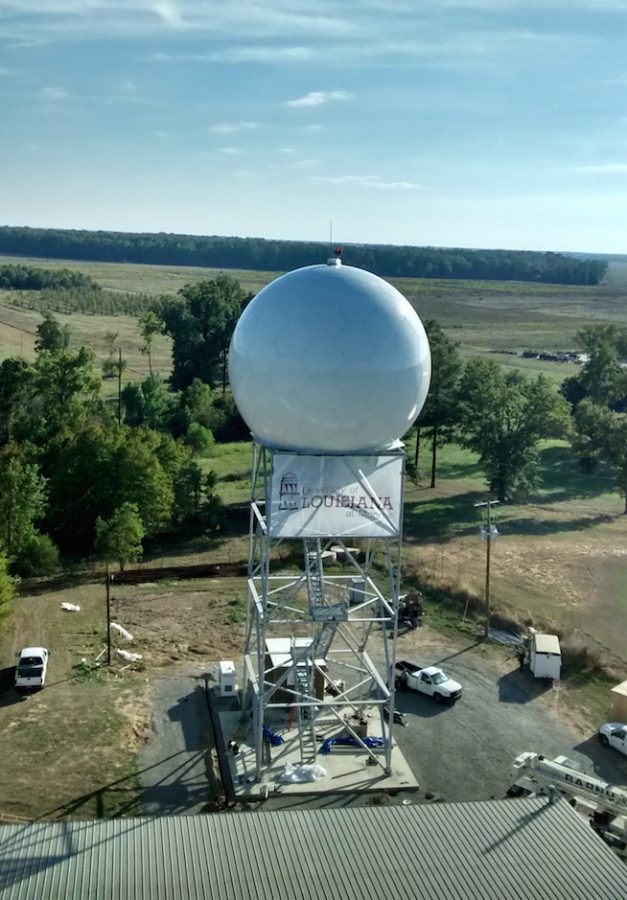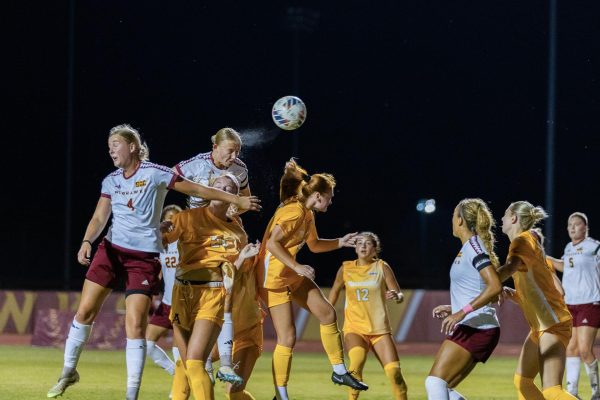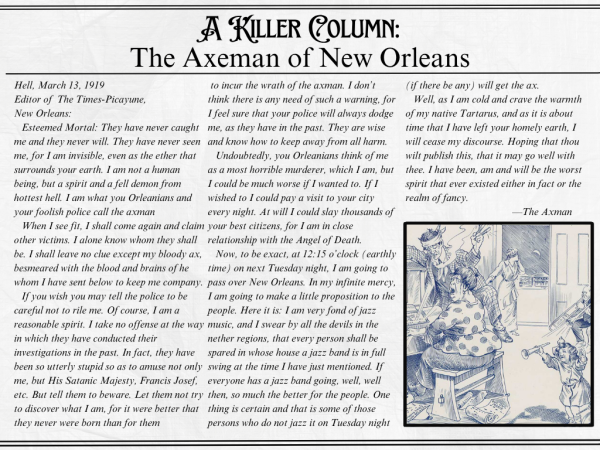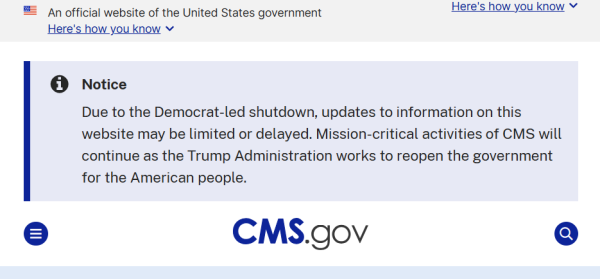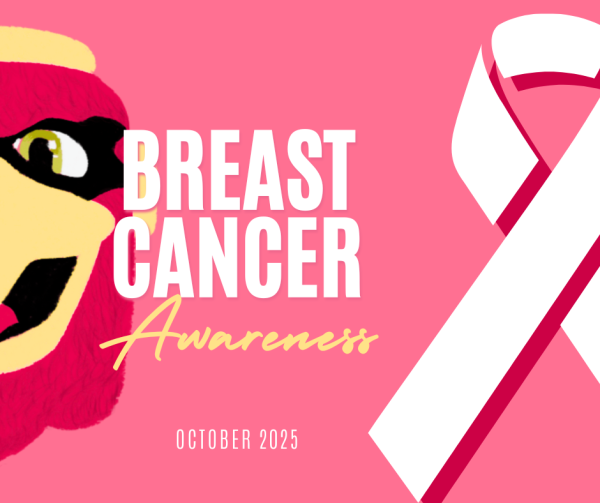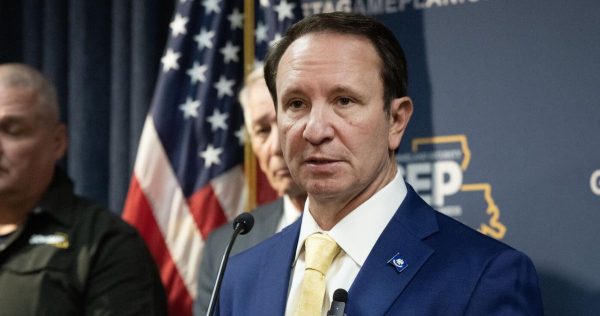Atmospheric science program continues to soar sky high
Campus receives new radar, students reflect on major
The University of Louisiana at Monroe provides several degrees and programs for its students to choose what path fits them.
One of these programs happens to be the only undergraduate atmospheric science or meteorology program in Louisiana, but that’s not the only reason the program is special.
According to Dr. Todd Murphy, an associate professor in ULM’s School of Sciences, the program “prepares students for a variety of career options and currently has alum working across the country as meteorologists at the National Weather Service, National Hurricane Center, local broadcast TV stations, researchers and even K-12 teachers.”
Also, its student-professor connection is extremely close and it has won many awards.
With only three professors and a handful of students, members of the atmospheric science program interact all the time and are therefore able to build strong relationships with each other.
Senior atmospheric science major Collin Landry even has a class with four people, including his professor.
Building close connections like this and hanging out with his fellow ATMS majors at their student American Meteorological Society socials is sophomore Dakari Anderson’s favorite part about being in the program.
AMS student chapter president, junior Greg Sova’s favorite part is launching weather balloons from the top of Hanna Hall and the library, because it’s fun.
These weather balloon launchers are a part of AMS’ community outreach and present the RSO in a very positive light.
Both the students and faculty of the atmospheric science program acquire accolades that also garner lots of positive attention for the university.
ULM’s student chapter of the AMS won Chapter of the Year honors at the 2016 AMS National Conference.
Sova said that accepting the award in Seattle of January 2017 was a triumphant moment for him, and one of the greatest experiences of his life.
This is in addition to the program being designated as a “Program of Excellence” by the Board of Regents and having several students be certified SKYWARN Storm Spotters.
Also, faculty members earn hundreds of thousands of dollars every year in research and other grants for the program.
One of their recent grants, acquired in 2012, was received from the Louisiana Governor’s Office of Homeland Security and Emergency Preparedness.
Receiving this grant shows that noteworthy programs get rewarded.
The grant was given in the field of hazard mitigation, which is defined by GOHSEP as “the sustained effort to reduce or eliminate long-term risk to life and property by lessening the impact of a disaster and requires understanding natural and man-made risks and their effects.”
The grant totaled three million dollars and funded a new Doppler radar system and 48KW generator for backup power.
ULM broke ground on the facility for the radar in 2015, and Enterprise Electronics Corp. built the radar system off-site and delivered it to the site this year.
On Wednesday, Oct. 25, the university held a ribbon cutting for the new Doppler radar that will fill a coverage gap over northeastern Louisiana and southeastern Arkansas.
Before ULM’s radar was operational, the closest radar sites to Monroe were the National Weather Service radars in Shreveport, LA, and Jackson, MS, but these radars emit microwaves higher than what needs to be read in the Monroe region.
According to Sova, “The radar beam would simply be too high to see stuff happening at low levels, where tornadoes occur.”
The university is contractually obligated to share with GOHSEP, and Murphy said that data from the radar is being sent “to both the National Weather Service and GOHSEP in order to further their missions of protecting life and property across our area.”
Data from the radar can be found at http://wxdata.geos.ulm.edu/ULMradar/, but plans to work on relationships to share the information locally are also in the works by both the university and GOHSEP.
This new radar not only allows local citizens to be helped, but also ULM students.
Under the instruction of Murphy, ATMS students can now learn radar meteorology hands-on with actual data instead of just from a textbook or radars that collect data far away.
While this new technology will be extremely helpful in teaching current students how to excel in their future careers, many ULM ATMS alumni have already been excelling.
Daniel Graves graduated from ULM’s ATMS program in 2014 and works as a weekend evening meteorologist for New Orleans’ WDSU Weather Team.
When asked how his experience at ULM shaped his future career goals, Graves said, “ULM helped to drive my passion for and the understanding of our weather phenomenon.”
He also said ULM provided him with the education and tools he needed in order to be a successful meteorologist in the real world.
Elisa Murillo graduated from ULM’s ATMS program in 2016 and now works in Norman, OK at the University of Oklahoma where she teaches a weather and climate lab.
In 1998, Eric Blake graduated from the ATMS program when ULM was known as Northeast Louisiana University(NLU).
He has helped create the five day Tropical Weather Outlook and received a Department of Commerce Bronze medal for work related to extended-range tropical cyclone forecasting.
He nows works as a hurricane specialist at the National Oceanic and Atmospheric Administration’s National Hurricane Center in Miami, FL. When asked what his views on NLU’s ATMS program were, Blake said, “I thought the NLU program was perfect for those that wanted to be an operational meteorologist for the National Weather Service- in fact many people from my years there are employed in that organization now.”
Not only are people from Blake’s years at the university employed by the National Weather Service, but future ULM alumni rolled out of the university and onto the NWS’s payroll as well.
Lee Robertson, a 2003 ULM’s ATMS program graduate, has traveled the farthest of all aforementioned alumni.
He now works in Philadelphia/Mount Holly, NJ, at the National Weather Service’s weather forecast office where he focuses on fire weather, radar and space weather.
Many students at ULM wish to have future jobs like these, but some have other ideas. Landry hopes to step foot in the insurance or forensic side of atmospheric science.
Anderson wishes to become a weather officer for the Air Force or work with the National Weather Service.
He believes ULM’s program is helping him achieve these goals through the ATMS RSO, because they visit different weather stations and the Air Force base in Shreveport.
With three million dollar innovations and multiple grants squared away, the ULM atmospheric science program continues to prove its worth, so don’t snooze on them, because they’re sure to continue excelling at lightning fast rates.


